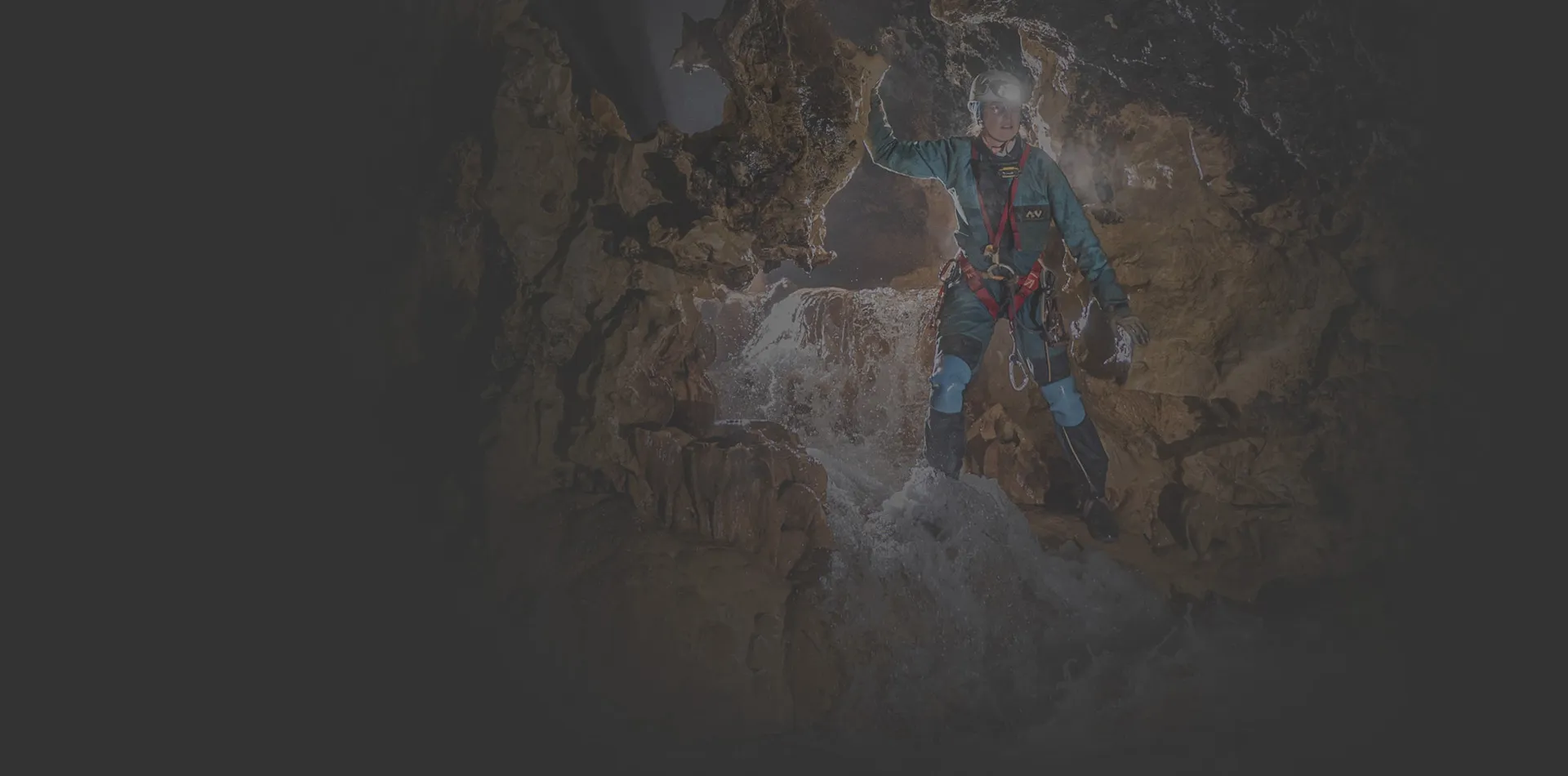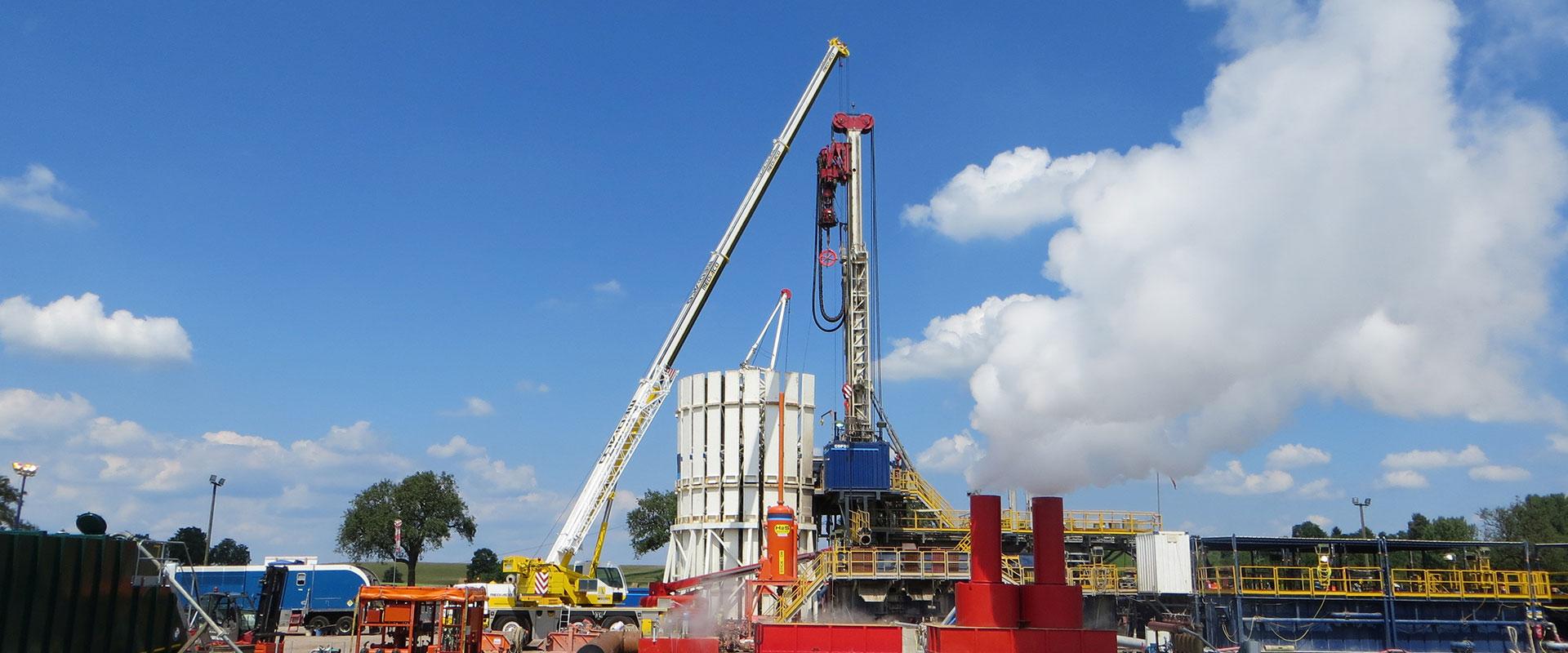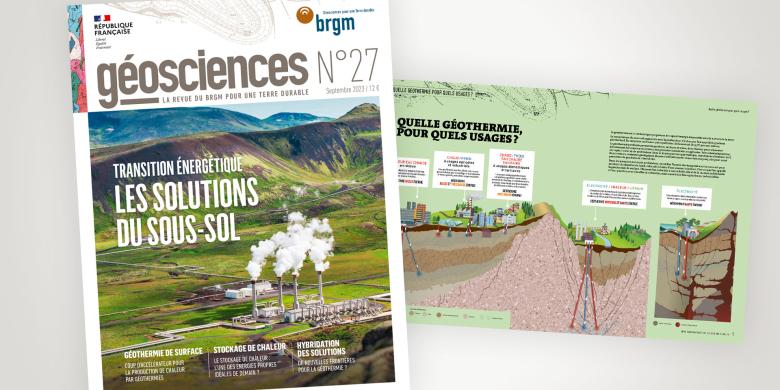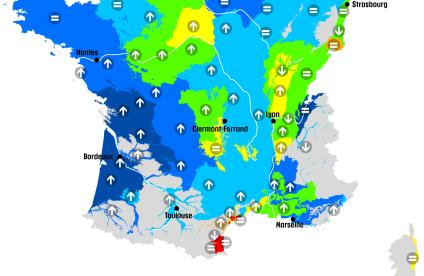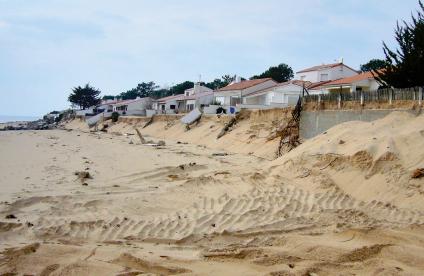Below is an infographic from Géosciences journal No. 27 published in September 2023, which provides the latest information on this topic.
Geothermal energy is the technology used to harness the energy available beneath the earth's surface.
The subsurface temperature increases with depth. This is known as the geothermal gradient. On average in mainland France, the subsurface temperature rises by 3.3°C per 100 metres in depth.
Deep geothermal energy is a sustainable way of producing heat that can be used directly to supply heating networks and industrial or agricultural processes. Very roughly speaking, at a depth of 2000 metres in the Paris Basin, for example, heat can be captured at a temperature of around 80°C. In some geological contexts (collapse trenches and volcanic areas), it can also be used to generate electricity.
At depths down to 200 m, the inertia of the subsurface temperatures is used for heating and cooling. This energy is then recovered using a heat pump. This is known as near-surface geothermal energy. It can be used on a scale ranging from single-family houses to eco-districts for heating and cooling, as well as for agricultural and industrial purposes.
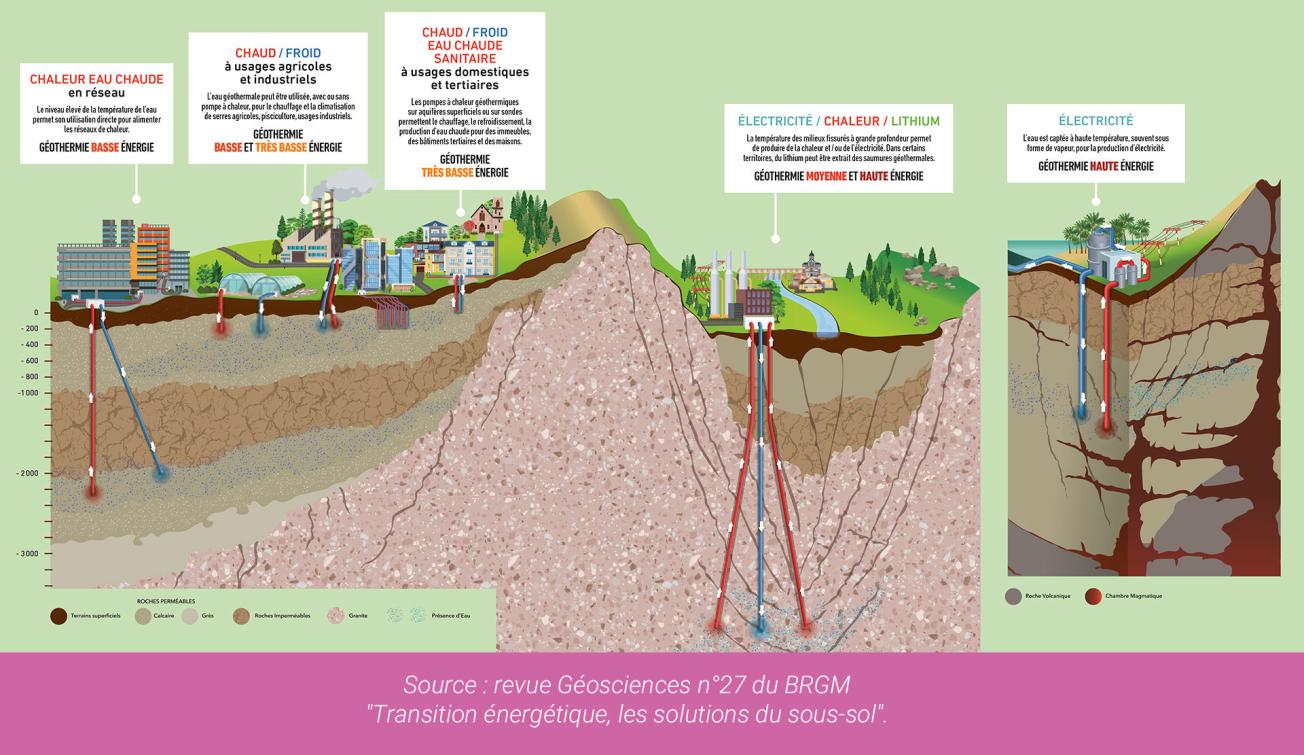
"Which geothermal energy for which uses" infographic taken from the 27th edition of Géosciences published in September 2023.
© BRGM
Detailed description
- Heating/hot water networks: the high water temperature means it can be used directly to supply heating networks (low-energy geothermal energy).
- Heating/cooling for agricultural and industrial use: geothermal water can be used with or without a heat pump to heat and cool agricultural greenhouses, fish farms and industrial facilities (low and very low-energy geothermal energy).
- Heating/cooling/domestic hot water for domestic and service sector use: geothermal heat pumps in near-surface aquifers or probes provide heating, cooling and hot water for blocks of flats, service sector buildings and houses (very low-energy geothermal energy).
- Electricity/heat/lithium: the temperature in deep fissured environments can be used to produce heat and/or generate electricity. In some areas, lithium can be extracted from geothermal brine (medium- and high-energy geothermal energy).
- Electricity: water is collected at a high temperature, often in the form of steam, to generate electricity (high-energy geothermal energy).
Geosciences No. 27: Subsurface solutions for the Energy Transition
Geothermal energy, CO2 or heat storage, access to mineral resources and more. This issue of Géosciences looks at the potential of the subsurface for the energy transition.
Associating the subsurface with the energy transition may appear incongruous. Wind turbines, photovoltaic panels, or possibly hydroelectric dams and nuclear power stations come more readily to mind. And yet, the energy and ecological transition that will gradually lead us to develop low-carbon energy will require us to make increasing use of the resources and potential of the subsurface.
Issue 27 of BRGM's Géosciences magazine investigates subsurface solutions: geothermal energy, CO2 storage, heat storage and hybridisation of these different solutions with other sources of renewable energy. It also looks at access to mineral resources, which are vital to the success of the energy transition.
